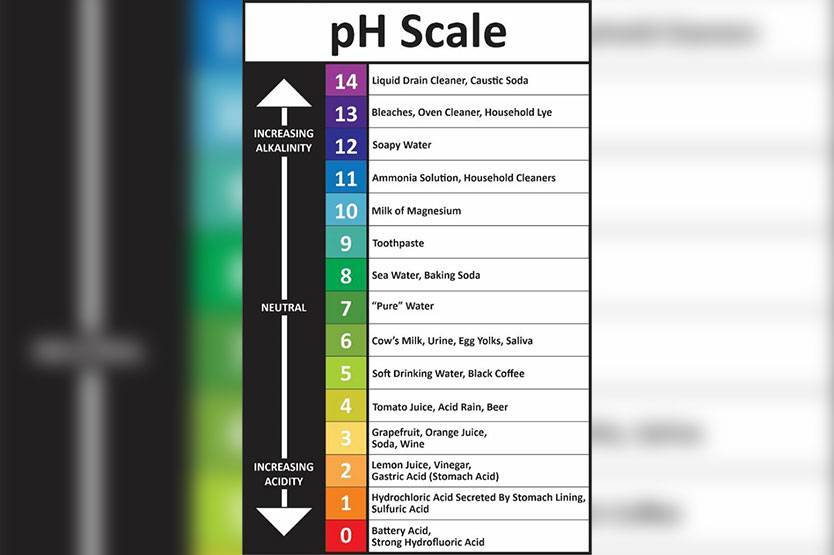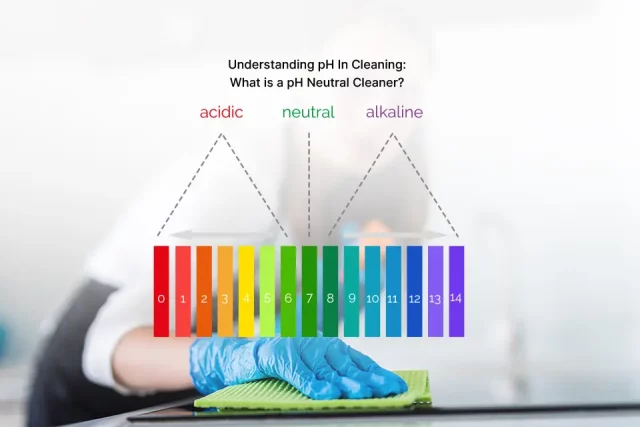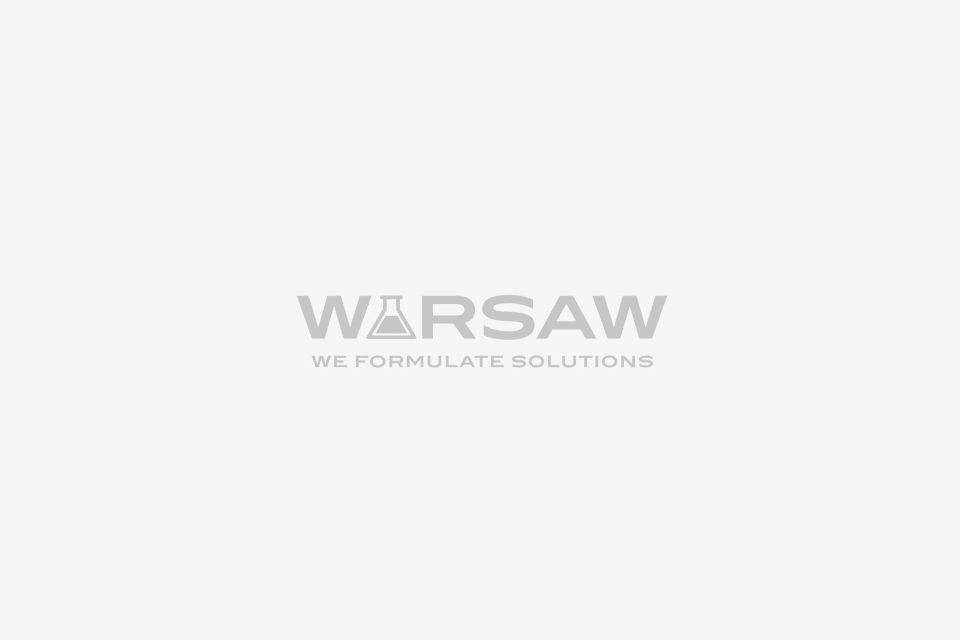Table of Contents
Toggle
My personal self-evident truth: There are a lot of scientific and advanced mathematical concepts, theories, and yes, even facts, that are pretty much beyond my scope of comprehension. Chemistry is one of them. As fascinating as it may seem, it’s difficult for me to grasp the complexities, and I can only observe in wonder at the beauty of it all.
But it is also true that pH can be one of the most uncomplicated chemistry certainties out there. So uncomplicated, even a layperson, such as I, can grasp the logistical concepts, if not the particulars.

So exactly, what is pH neutral? What is high pH? Low pH? pH, or potential hydrogen, measures the acidity or alkalinity of a chemical or chemical compound (except solvent blends, which do not have a measurable pH) when mixed with water. For the purpose of this article, we will refer to a chemical or chemical compound that has been mixed with water as ‘solution.’
What is the meaning of pH level?
pH levels range from 0 to 14. The higher the pH number, the lower the concentration of hydrogen ions in the solution and the more alkaline, or caustic, it is.
Conversely, the lower the pH number, the higher the concentration of hydrogen ions are contained in the solution, making it more acidic in nature.
What is neutral pH level? A pH of 7 is the most absolute neutral, but in most industries, the pH of a neutral solution is essentially considered to be anywhere from 6.0 to 9.0.

How do you determine the pH level of a solution?
Most labs use a pH meter to test pH, getting highly accurate results. But for the rest of us, pH is tested by dipping a pH test strip, also referred to as an indicator strip, into the solution and comparing the color result to a pH chart.
Sounds easy, right? Well, it is!
What pH level makes a better cleaner?
Now that you know the pH level, how do you apply it to cleaning? Which is a better cleaner? An acid product or an alkaline product? Or are pH neutral cleaning products the best? The answer is all three.
Effective cleaners, most of which have already been mixed with water, can fall anywhere on the pH scale. What you need depends on what type of soil you are removing and what the surface to be cleaned is composed of. But user beware…both highly acidic and highly alkaline solutions carry risks and chemical resistant gloves should always be worn when dealing with solutions of unknown compositions.
Most of us are already mindful that acids, such as battery acid and many extra-strength toilet bowl cleaners, are corrosive, but there’s less awareness that solutions with a high alkaline pH, like bleach, are also toxic and can cause burns. pH neutral cleaners are mild and considered non-hazardous.
What is pH neutral cleaner?
What does pH neutral mean for cleaning purposes? Neutral pH cleaners are less likely to damage surfaces not harmed by water. This includes aluminum, zinc, nonferrous metals, and other materials that can easily be damaged by strong chemical cleaners.
Benefits of using a neutral solution include less toxic for the environment and safer for the user and any pets or children that may be in the vicinity. Most neutral pH cleaners do not require proper precautionary steps to use.
But the uses for neutral cleaners are as varied as the products themselves. For instance, our product Maintain Neutral Floor Cleaner has a pH of approximately 7.0. When diluted with water as directed, Formula 519 Foam Brush Detergent has a pH in the same general range as Maintain. But these products are vastly different, not only in use areas, but in chemical components, as well. The level of hydrogen in their solutions is what unites them with a common pH range.
Checking the label of your cleaner for product information and usage area is recommended. Some cleaners are concentrates that require a dilution with water (which will also alter the pH level.) For instance, a cleaner formulated to use on tiled floors would most likely not be suitable for wooden floors, no matter the pH of the cleaning product.
Can you use a neutral cleaner on all soils?
While you can essentially use neutral cleaners on almost any surface, they don’t always produce desired results on certain soils. Many times, you need something that is effective at breaking down grease and grime or a product that removes rust or eliminates odors.
Bathroom cleaners, such as Warsaw Chemical’s Stay II, tend to be acidic because the acid works on removing calcium deposits, minerals, and build up, but even mildly acidic cleaners can etch glass, metal, and stone surfaces.
Cleaners higher in alkalinity aid in breaking down fats, oils, proteins, and other organic soils. Alkaline solutions are used quite often in foodservice and in automotive industries.
For example, our Vista Oven and Grill Cleaner is specially formulated to remove baked-on grease and to eliminate heavy, greasy residue from deep fat fryers. Similarly, our Truck Choice Full Throttle is a heavy-duty truck wash detergent that quickly cuts through and removes oily, greasy soils and road film from painted and unpainted vehicle surfaces. Neither product harms most metals and chrome when used as directed.
Both Vista and Full Throttle are made to tackle heavy, oily soils, but both are produced specifically to use on metal surfaces. If Stay II were used to clean marble or a truck, the soils might be removed, but would likely damage the finish.

So, it is crucial to define the surface you are cleaning and the substance you need to remove when determining what type of cleaner to use.
It may seem like a good judgement call to believe that mixing an acidic product with an alkaline solution will result in a more neutral pH. Theoretically, that may be true, but technically, it’s a bit more complicated than that and there are more things to consider than just pH.
Mixing chemicals is NEVER a good idea unless you have a chemistry degree from Notre Dame, or some college institution equally as impressive. Combining chemical products can create dangerous situations, such as toxic fumes or combustible solutions.
What does this mean for cleaning with a neutral cleaner?
Remember that although high pH and low pH products are more effective cleaners, they also carry more risks. Vapors and harsh compounds can cause distress to both users and surfaces.
Most all-purpose cleaners have a neutral pH. pH neutral cleaners tend to be less effective on heavy soils but are quite efficient when used on basic, lighter duty applications where user safety and surface protection are less of a concern.

This normally includes day-to-day, routine cleaning of dusty surfaces and light soils, including mopping, doing dishes, cleaning countertops, tiles, grout, stone, or marble surfaces.
When unsure of what pH is needed for a specific application, it’s always better to start with a less aggressive, neutral pH cleaning product. If there are doubts as to whether your neutral pH, all-purpose cleaner can handle the job, test in a small, inconspicuous area prior to tackling the entire task.
What are the benefits of a neutral pH solution?
Cleaning can be quick and easy. Neutral cleaners can be used on almost every surface without concern for damage. There is no need for precautionary measures.
We’ve already mentioned that neutral pH products are safer for users and less toxic to the environment, but why is that so?
Neutral pH is close to human pH, making them excellent choices to use around children or pets. They are less likely to result in skin irritation or burns. The chemicals in a neutral pH compound do not cause fumes, which can have significant health effects, both short term (nausea, headaches, dizziness, etc.) and long-term (allergies, respiratory illnesses.)
pH neutral cleaners do not contain chemicals such as hydroxides, silicates, or phosphates. And we’ve all heard what excessive use of phosphates does to the environment. It makes our water gross!
Beyond safety, neutral cleaning products can be easily rinsed off without leaving any residue behind to discolor your surfaces or attract dirt and grime.
What is the bottom line?
Let’s face it, the cleaning solutions we use ultimately will come down to our own preferences. But experience and common sense tell us that we need to be more conscious of making better decisions…for not only our health, but for the health of those around us. And more notably, for the condition of the world we’re leaving to those who follow.

Choosing the least aggressive product for the job in front of us is really the most honorable decision we could make regarding cleaning. And pH neutral products are that choice.
See below for a partial list of Warsaw Chemical’s most popular neutral cleaners.
Related Posts
Ready to Place an Order or Need Assistance?
Whether you’re looking for field support or ensuring your orders are accurately processed and delivered on time, our team is here to guide you every step of the way. Count on us for reliable service and expert assistance whenever you need it.


